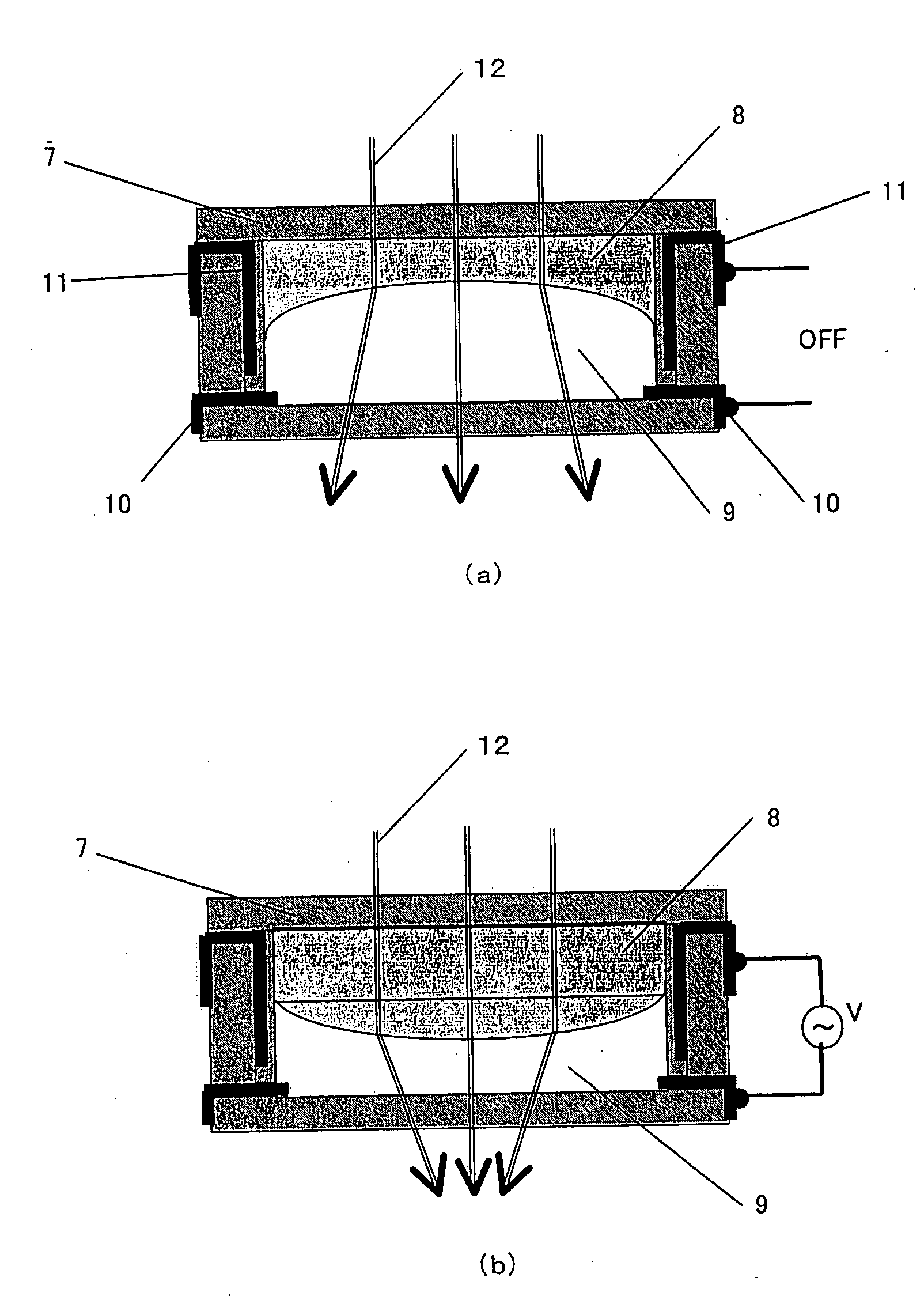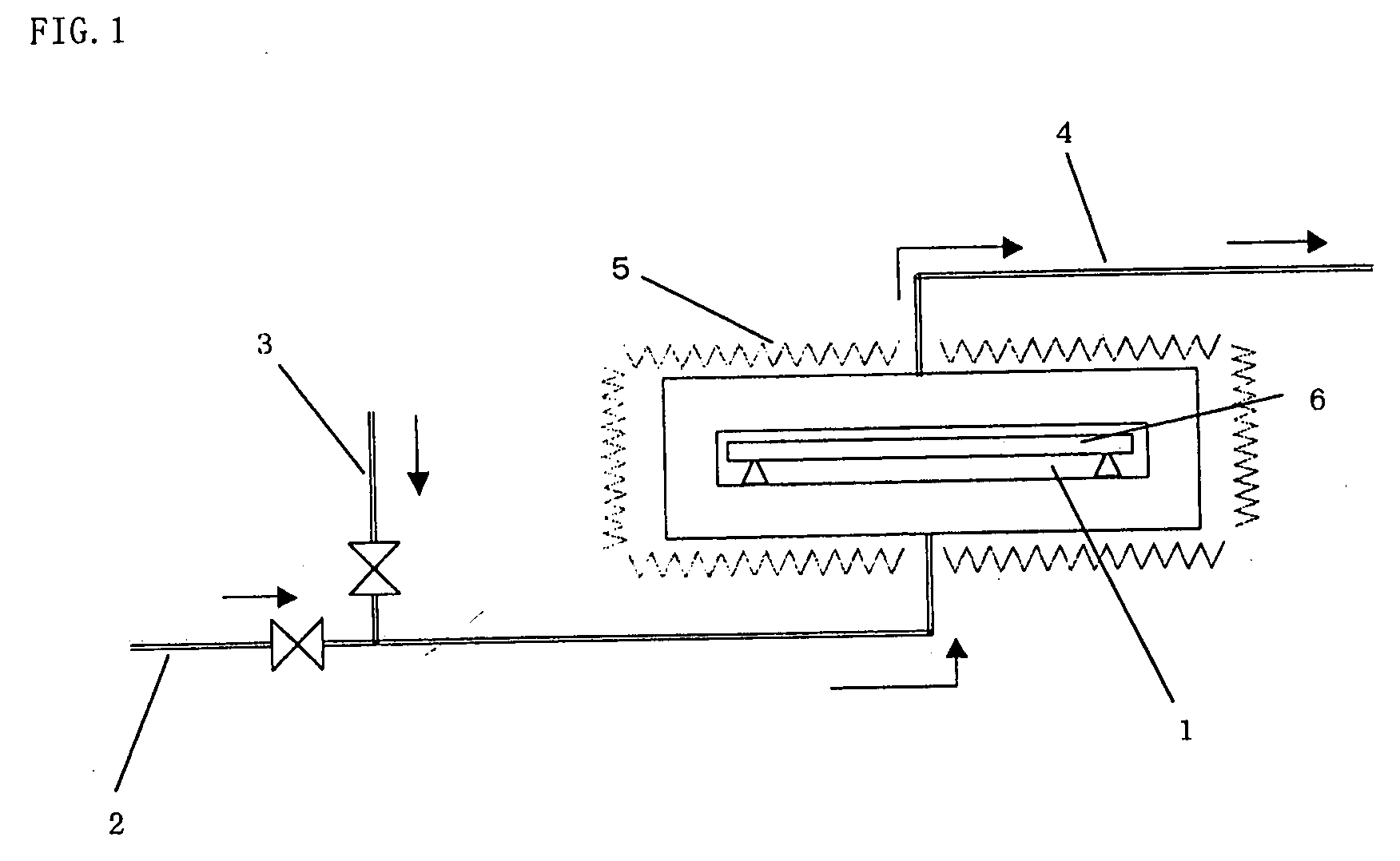Optical Element
a technology of optical elements and liquids, applied in the field of optical elements, can solve the problems of increasing the size of instruments or noise during operation, unstable interface between liquids, and complex device structures, and achieve the effects of small configuration, small size, and improved optical properties
- Summary
- Abstract
- Description
- Claims
- Application Information
AI Technical Summary
Benefits of technology
Problems solved by technology
Method used
Image
Examples
example 1
[0193]A tubular electrode and an electrode made of gold were subjected to insert molding using an alicyclic structure-containing polymer resin (Zeonex 480R manufactured by Zeon Corporation containing 0.05 wt % of hindered amine light stabilizer and 0.05 wt % of alkyl-substituted phenol antioxidant) to obtain an open-ended tubular container base material having an inner diameter of 5 mm, a height of 3 mm, and a thickness of 1 mm. A solution of the alicyclic structure-containing polymer resin was applied to the surface of the tubular electrode exposed on the inner surface of the container and dried to electrically insulate the electrode.
[0194]The alicyclic structure-containing polymer resin was separately molded to obtain a disk-shaped top plate and a bottom plate with a holographic surface, each having a thickness of 1 mm, for closing the top and bottom openings of the container.
[0195]The container base material was placed in a chamber made of 316L stainless steel (Japanese Industria...
example 2
[0198]A tubular electrode and an electrode made of gold were subjected to insert molding using an alicyclic structure-containing polymer resin (Zeonex 480R manufactured by Zeon Corporation containing 0.05 wt % of hindered amine light stabilizer and 0.05 wt % of alkyl-substituted phenol antioxidant) to obtain an open-ended tubular container base material having an inner diameter of 5 mm, a height of 3 mm, and a thickness of 1 mm. A solution of the alicyclic structure-containing polymer resin was applied to the surface of the tubular electrode exposed on the inner surface of the container and dried to electrically insulate the electrode. The alicyclic structure-containing polymer resin was separately molded to obtain a convex lens-shaped top plate for closing the top of the container and a bottom plate with a Fresnel lens-shaped surface.
[0199]After placing the container base material in a chamber made of 316L stainless steel, the container base material was heated at 120° C. for three...
production example 1
[0201]A stainless steel pressure-resistant container of which the atmosphere was replaced with nitrogen was charged with 76.8 parts of styrene and 3.2 parts of isoprene. The components were mixed with stirring to prepare mixed monomers. A stainless steel autoclave of which the atmosphere was replaced with nitrogen and which was equipped with an electromagnetic stirrer was charged with 320 parts of dehydrated cyclohexane, 4 parts of the mixed monomers, and 0.1 part of dibutyl ether. 0.454 parts of a hexane solution of n-butyl lithium (concentration: 15%) was added to the mixture at 50° C. with stirring to initiate polymerization. After 0.5 hours elapsed from the initiation of polymerization (polymerization conversion rate in this stage was about 96%), 76 parts of the mixed monomers were continuously added over one hour. After 0.5 hours elapsed from the completion of the addition of the mixed monomers (polymerization conversion rate in this stage was about 95%), the reaction was termi...
PUM
 Login to View More
Login to View More Abstract
Description
Claims
Application Information
 Login to View More
Login to View More - R&D
- Intellectual Property
- Life Sciences
- Materials
- Tech Scout
- Unparalleled Data Quality
- Higher Quality Content
- 60% Fewer Hallucinations
Browse by: Latest US Patents, China's latest patents, Technical Efficacy Thesaurus, Application Domain, Technology Topic, Popular Technical Reports.
© 2025 PatSnap. All rights reserved.Legal|Privacy policy|Modern Slavery Act Transparency Statement|Sitemap|About US| Contact US: help@patsnap.com



